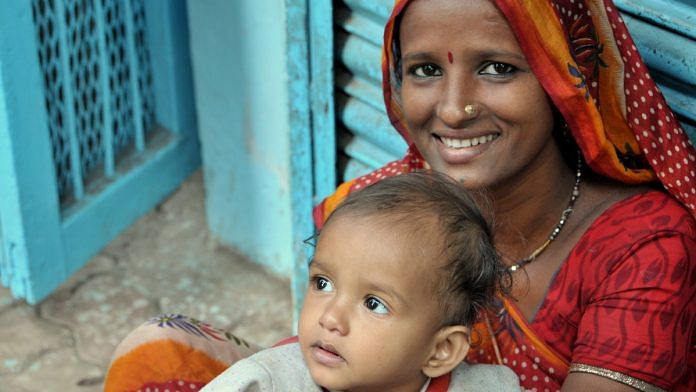New Delhi: Finance Minister Nirmala Sitharaman Saturday announced a task force to provide recommendations on the appropriate age for women to become mothers.
Announcing the Union Budget 2020, she said it was imperative for India to further lower its maternal mortality rate (MMR).
Track live Budget updates here.
“Women’s age of marriage was increased to 18 years in 1978 by amending the erstwhile Sarda Act of 1929. As India progresses further, opportunities open up for women to pursue higher education and their careers. It is imperative to lower the maternal mortality rate (MMR),” she added.
The British-era Sarda Act — officially called the Child Marriage Restraint Act, 1929, but known after its sponsor, academic Harbilas Sarda — fixed the minimum age of marriage for girls at 14 years and boys at 18 years. It was amended in 1978 to raise the age for women to 18 years, and men to 21.
The Sarda Act was repealed in 2006 and replaced by the Prohibition of Child Marriage Act, 2006.
As India progresses, Sitharaman said, it may be time to address this matter again.
“Entire issue of the age of girls entering motherhood needs also to be seen in this light. I propose to appoint a task force that will present its recommendations in 6 months’ time.”
Also Read: BJP-ruled constituencies fare worst on all maternal health indicators, study shows
‘Caring society’
As part of the ‘Caring Society’ subsection of her budget speech, Sitharaman, India’s first full-time woman finance minister, addressed several issues pertaining to women empowerment.
Under the Modi government’s ‘Beti Bachao, Beti Padhao’ scheme, she said, the gross enrollment of girls across all levels of education has been higher than that of boys.
“Gross enrollment of girls in elementary level is 94.3 per cent, as opposed to 89 per cent for boys. In secondary level, gross enrolment of girls is 81.38 per cent versus 78 per cent for boys,” she added.
“At higher-secondary level, enrolment of girls is 59.7 per cent and 57.53 per cent for boys.”
Sitharaman also lauded the Poshan Abhiyan, which was launched in 2017-18 to improve the nutritional status of children aged 0-6 years, adolescent girls, pregnant women and lactating mothers.
“More than 6 lakh anganwadi workers are equipped with smartphones to upload the nutritional status of more than 10 crore households,” she said.
Sitharaman added that the government has allocated Rs 28,600 crore for women-specific programmes and Rs 35,600 crore for nutrition schemes.
Also Read: Truth be told, Modi’s budget won’t solve India’s economic crisis



